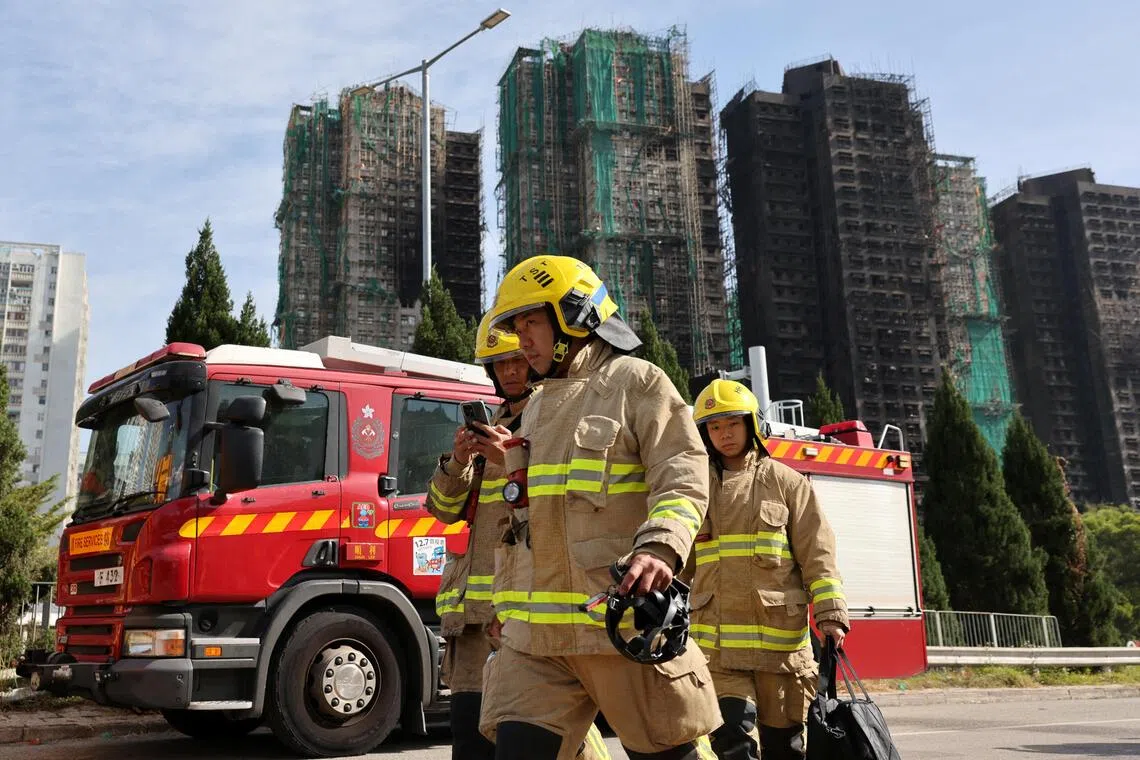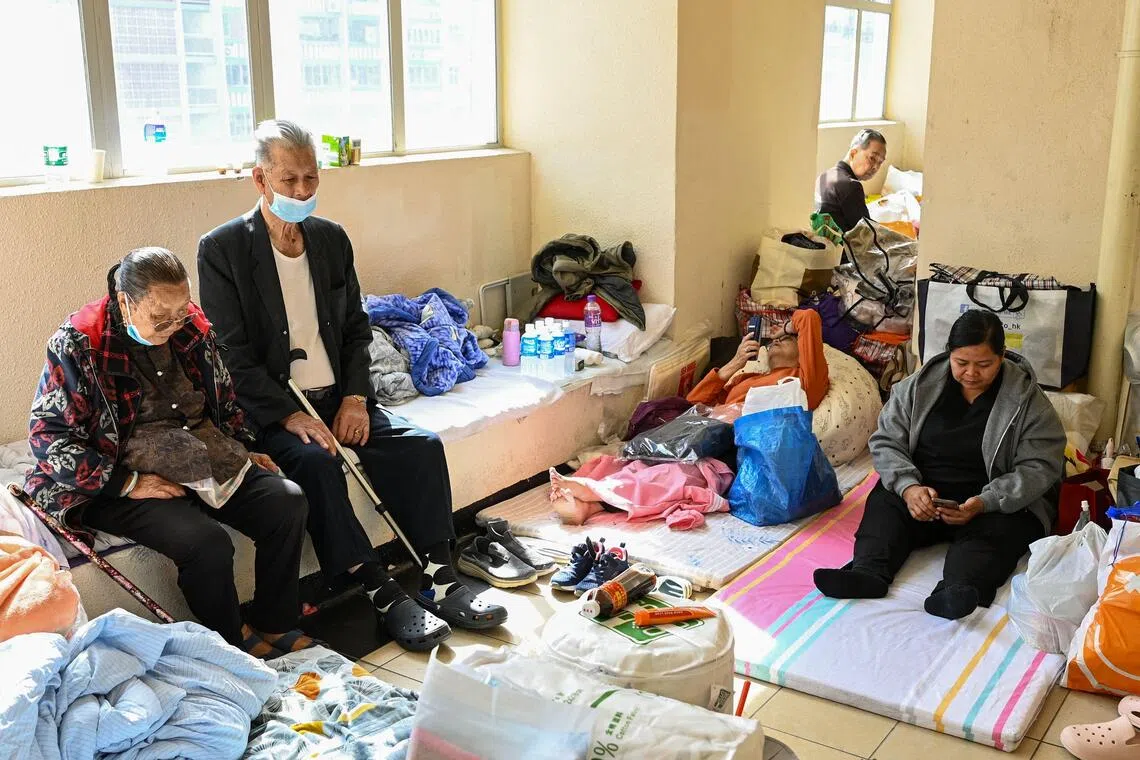Hong Kong blaze that killed 94 puts spotlight on missed warnings
Sign up now: Get ST's newsletters delivered to your inbox

Firefighters near the site of a major fire at the Wang Fuk Court housing complex in Hong Kong, on Nov 28.
PHOTO: REUTERS
Follow topic:
HONG KONG – Hong Kong’s deadliest fire in decades, which killed at least 94 people
It is still unclear how many residents remain unaccounted for after the blaze tore through the Wang Fuk Court complex in Tai Po, a cluster of residential towers that once housed about 4,600 people.
Fire Services deputy director Derek Chan said crews will confirm the number of the missing only after they finish a unit-by-unit sweep of the buildings.
Inspections flagged risks
The company handling the HK$315.5 million (S$53 million) renovation is also working on 11 other residential projects across Hong Kong, officials said.
The disclosures have raised concern over the enforcement of safety standards. Police have arrested three senior figures from an engineering company on suspicion of manslaughter. A criminal investigation will follow.
“It’s premature to pass judgment on any officials or even on any companies involved, but I think the government should take a good look at our existing legislation,” Hong Kong lawmaker Regina Ip said on Nov 28.
This includes identifying any gaps in requirements for fire-retardant materials, whether for major works or small-scale renovations, and stepping up enforcement, she added.
The fire, which broke out in the afternoon on Nov 26, was brought under control late on Nov 27, though pockets of flames were still visible in some apartments.
The blaze began on a section of bamboo scaffolding erected for the renovation project and quickly wrapped around the compact cluster of high-rises.
Hong Kong Chief Executive John Lee visited the disaster site on Nov 27. He had earlier ordered a citywide inspection of all housing estates undergoing major renovations.
At a snap briefing, he said each affected family would receive HK$10,000 in relief. Flanked by several officials, he also pledged to completely phase out bamboo scaffolding in favour of metal alternatives.
The unprecedented high-rise blaze comes at a delicate moment for Hong Kong
The global finance hub has been working to rebuild its international image after mass protests, a national security crackdown and strict Covid-19 controls drew criticism from some Western governments.
Officials are days away from heavily promoted legislative elections – and Mr Lee would be weighing whether to postpone them.
Secretary for Security Chris Tang said previously that investigators found foam boards covering windows in the lone building that escaped the flames.
“These foam boards are highly flammable, and the fire spread very quickly, so we found their presence unusual,” he said.
Netting and plastic sheeting encasing the buildings also burned far more intensely than expected, he said.
Renovation works at Wang Fuk Court were carried out by Prestige Construction and Engineering. Bloomberg News visited Prestige’s office on Nov 27, but the shutters were down, and no one responded despite repeated knocking. Phone calls to the office went unanswered.
The death toll has now exceeded that of the Grenfell Tower fire
While that tragedy unfolded in the middle of the night as residents slept, this fire began mid-afternoon, when many people would have been awake.
Questions are also being raised about fire alarm failures.
The South China Morning Post reported that alarms did not activate even after residents smelled smoke. Many were alerted only when a security guard knocked on their doors, leaving them with little time to evacuate, according to the report.
Residents displaced by the fire will be sheltered in temporary accommodation. About 1,800 units of transitional housing will be made available, roughly equivalent to the estate’s entire housing stock.

Residents displaced by a massive blaze that gutted the Wang Fuk Court housing complex taking shelter inside a mall.
PHOTO: PAFP
Volunteers have rushed to the site and corporate donations have poured in, including from the Jockey Club, which pledged up to HK$170 million
Deadly fires have prompted major housing policy overhauls in Hong Kong in the past. Most notably, the Shek Kip Mei fire in 1953, which displaced tens of thousands of refugees, led to the start of the city’s public housing programme, with the government providing resettlement housing for the residents. BLOOMBERG

